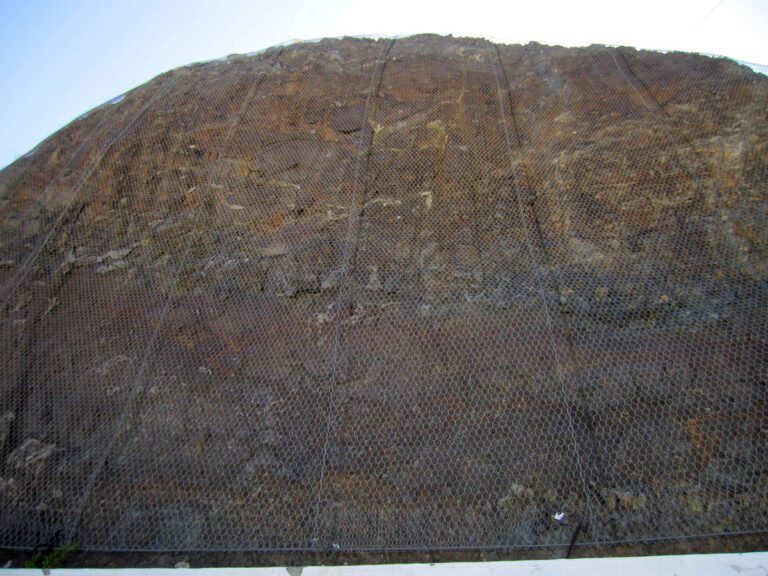Slope Conditioning
How do we stabilize a slope?
An unstable slope is an inclined terrain that requires special measures for its stabilization and safety.
BULCAN ARTE has a highly specialized team in vertical work and slope stabilization. Our Civil and Mining Engineers ensure optimal solutions for each terrain.
We have the necessary machinery—such as drills, compressors, and shotcrete machines—to efficiently tackle any challenge.
We also carry out prior surface cleaning to fully prepare the terrain. Our services are available to a wide range of clients, including construction companies, government agencies, and private individuals across the archipelago.
Slope Conditioning Services
We apply different techniques to ensure optimal treatment for each unstable surface.

Triple-Twist Mesh Installation
We offer various types of triple-twist mesh adapted to the specific needs of each slope. Our products comply with European regulations and are designed to resist corrosion, backed by manufacturer guarantee certificates. There are two types:
This system, the most common and cost-effective, is anchored at the top of the slope using steel bars and a steel cable that supports the mesh. It is then stitched between mesh panels and anchored at the bottom, allowing for easy maintenance.
For slopes that require greater strength, we offer the reinforced mesh system. We install steel rock bolts injected with cement across the entire surface of the slope, followed by steel cables stitched vertically, horizontally, and diagonally to ensure uniform load distribution and high tear resistance.
Steel Cable Network Installation
The installation of a steel cable network is essential for terrains with unstable rock blocks to ensure stability against terrain pressure. This network, made of 8 mm galvanized cables interwoven in 150 to 300 mm diamond patterns, can withstand up to 40 kN/m². It is laid over an 8×10-16 triple-twist mesh (2.7 mm wire) to contain small rocks and is bound horizontally and vertically with 16 mm steel cables. It is anchored to the terrain with self-drilling GEWI steel bars, 25 mm in diameter and 3 to 6 meters long, using cement grout injection.
Drilling, Rock Bolts, and Anchors
To ensure the stability of meshes or cable networks, adequate anchoring to the terrain is required based on each slope’s needs. Anchor types vary in thickness (starting at 25 mm) and depth (starting at 2 meters).
Installing rock bolts involves drilling optimal areas of the terrain and filling the holes with cement grout for strong fixation. Then, a distribution plate and nut are added, anchoring the chosen holding system—reinforced mesh, cable network, or both.
Drain Holes (Mechinales)
Drain holes prevent rotational landslides by relieving pressure from groundwater. They are drilled at different depths into the slope, and a porous or slotted pipe—PVC or metal—is installed.
Dynamic and Static Barriers
Dynamic barriers are designed to stop potential rockfalls or mass displacements. Their main feature is their ability to absorb impact, dissipating kinetic energy and protecting the entire system.
Static barriers offer a cost-effective solution. However, their installation requires a detailed prior study to determine the height, anchoring, and dimensions needed based on the retained elements.
Wet-Mix Shotcrete
The wet-mix shotcrete method is optimal for achieving a precise and high-quality mix. Prepared at the concrete plant, it ensures accurate composition and better material quality. We use high-pressure shotcrete machines to apply the mix at the necessary heights on the slope.
Themed Slopes
Slope retention shouldn’t be limited to spraying concrete, which can be visually intrusive. BULCAN ARTE adds value by recreating themed finishes—from rocky volumes to stone-block walls—harmonizing safety, aesthetics, and prevention.

